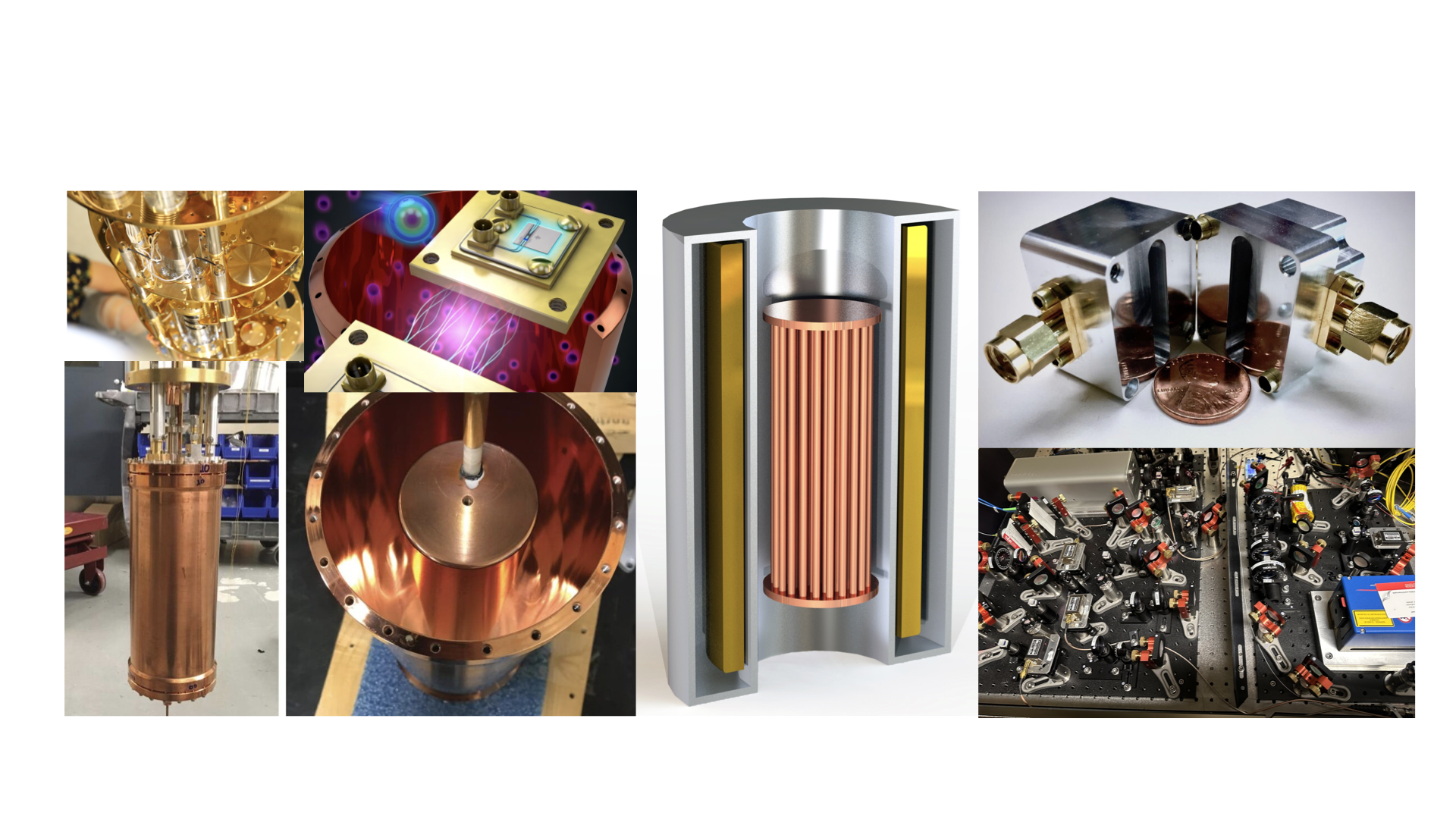Welcome to the Axion Dark Matter Research page. Axions are hypothesized candidates for the identity of dark matter, and we are conducting several experiments at Yale to detect it in the lab.
ALPHA
ALPHA (Axion Longitudinal Plasma HAloscope) will comprehensively investigate how new experimental ideas using plasmas can be used to detect the axion. One plasma we will focus on in particular is made from a collection of parallel, thin wires, a “thin wire meta-material”. Meta-materials are manufactured composite materials that can exhibit properties which are unusual in naturally-occurring materials. We will investigate the ability of one of the simplest meta-materials to exhibit so-called resonant conversion of axions from the Milky Way’s dark matter halo into particle-like ‟plasmons”, excitations in the meta-material.
HAYSTAC
The Haloscope At Yale Sensitive To Axion CDM (HAYSTAC) Experiment is a microwave cavity search for cold dark matter (CDM) axions with masses above 20ueV. Located at Yale’s Wright Laboratory in New Haven, Connecticut, the HAYSTAC collaboration consists of members from Yale University, the University of California Berkeley, Lawrence Berkeley National Laboratory, and the University of Colorado at Boulder. HAYSTAC searches for axion dark matter in the galactic halo by searching for a resonant photon signal produced by axion conversion in a magnetic field. The detection of such a signal would provide important clues to the nature of dark matter and the constitution of the mass content of the universe.
RAY
Rydberg atoms are atoms with a very high principal quantum number, meaning an excited valence electron likely exists far from its nucleus. The high energy level and large radius of Rydberg atoms gives them interesting and useful properties, and the Rydberg Atoms at Yale (RAY) phase of HAYSTAC will exploit these atoms’ sensitivities to detect single axion-converted microwave photons.
